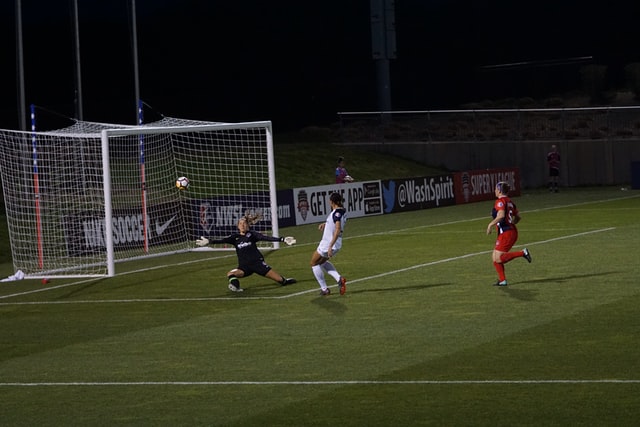More so than anything else, soccer is about scoring goals. The more goals you score, the more likely you are to win the game!
But it’s just as important to keep a clean sheet and prevent the other team from scoring as conceding too many goals will affect your position in the league.
So, with this in mind, this article explains everything you need to know about goal difference in soccer and why it’s a metric to keep an eye on.
What does GD mean in soccer?
In soccer, GD means goal difference. In a soccer table, the letters usually sit next to the points total of each team. Goal difference is the calculation of how many goals your team has scored, minus the goals they have conceded. The resulting number is your team’s goal difference, and it can be a positive or negative number.
Why is goal difference important in soccer?
Goal difference is important in soccer because it contributes to the final league standings. For instance, if you finish the season on exactly the same number of points as another team, the team with the better goal difference will finish higher in the standings.
It’s also an important metric for coaches, as it gives them a good idea of how well their team is performing during the season. If a team has a negative goal difference, it’s a sign that they need to try and improve things at both ends of the field.
By the end of the season, goal difference can have a big say on who wins the league, who gets relegated, and who makes the playoffs. So, it’s really important not to ignore your goal difference throughout the season.
How do you calculate goal difference in soccer?
Calculating a team’s goal difference in soccer couldn’t be easier. Simply take the number of goals they have scored and subtract the number of goals they have conceded. The resulting number is that team’s goal difference for the season.
So, for instance, if Seattle Sounders scored 60 goals in a season but conceded 44, their goal difference would be +16. Conversely, if Chicago Fire only scored 35 goals but conceded 65, their goal difference would be -30.
As you can see from the example, a positive goal difference is always better than a negative goal difference, as it means your team has scored more goals than it has conceded. Teams with negative goal differences tend to struggle towards the bottom of the league standings as a result.
How can you improve your goal difference?
The best way to improve your team’s goal difference is to work on things at both ends of the field. This is because goal difference is influenced by the number of goals you score and concede, so you really need to work on all aspects of your game if you want to see an improvement.
However, most teams towards the bottom of the league find it easier to work on their defense in an attempt to improve their goal difference. This is because it’s easier to shut out your opponents than it is to score goals.
So, if you’re thinking of ways to improve your team’s goal difference, get involved in some drills on the training field and work on your defensive shape. You might even consider parking the bus as a tactic in one of your upcoming games.
Positive and negative goal differences explained
A positive goal difference in soccer is when you have scored more goals than you have conceded, and the opposite is true for a negative goal difference. While goal difference doesn’t make a great deal of difference from week to week, it is likely to influence things at the end of the season.
It’s practically impossible to win the league with a negative goal difference, and you very rarely see teams in the top positions with a negative number by their points tally.
If your team is scoring goals and defending well, your goal difference will improve as a result. This will help you climb the table and could be crucial when it comes to deciding the standings at the end of the regular season.
Can goal difference settle the league?
When two or more teams are tied with the same number of points, the league association can turn to goal difference to decide the champions.
For instance, in the 2011-2012 English Premier League, goal difference was used to determine the champions. Manchester City famously clinched the title, with Sergio Aguero scoring one of the most dramatic last-minute goals in the history of soccer!
Although both Manchester sides finished the season on 89 points, City were handed the title because they had a better goal difference than United by eight goals. Talk about fine margins!
So, if your team is battling for the title or fighting against relegation, it’s really important to keep an eye on your goal difference, as failing to do so might cost you at the end of the season, as Manchester United found out in 2011-12.
Recap: Goal difference in soccer
In soccer, goal difference is one of the most important metrics that is used to determine where a team finishes in the league table. Your goal difference is the total number of goals you have scored, minus the number conceded, and can be a positive or negative number.
Teams further up the table are more likely to have a higher goal difference, while those flirting with relegation are likely to have a negative GD.

